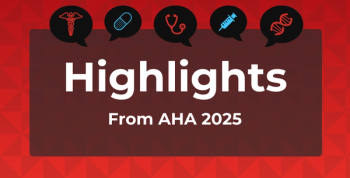
Hypertensive Disorders in Pregnancy on the Rise
The rates of 3 hypertensive disorders were compared among 2 groups of women: those who gave birth between 1995 and 1999 vs 2015 to 2019.
Incidence of new-onset
Findings were published this week in
This serial cross-sectional study covered almost 4 million women with a first pregnancy resulting in a live birth between 1995 and 2019, with their primary exposures being year of delivery (period) and birth year (cohort). The team of investigators wanted to know of possible associations between birth year of a pregnant individual and pregnancy-related hypertensive disorder trends. Adjusted rate ratios (aRRs) accounted for the potential influence of age and cohort in each delivery period and age and period in each birth cohort. The National Vitals Statistics System provided the patient data.
More than half of the study population was non-Hispanic White (57.8%), 20.2% were Hispanic, 13.9% were non-Hispanic Black, 6.5% were non-Hispanic Asian or Pacific Islander, and 0.8% were non-Hispanic American Indian or Alaska Native. The most common age range of giving birth was 20 to 24 years (28.4%) in the 1995-1999 period (n = 7,675,250) and 25 to 29 years (28.6%) in the 2015-2019 period (n = 7,184,354).
There was a 59% greater risk of having a hypertensive disorder during pregnancy for the women who delivered between 2015 and 2019 (aRR, 1.59; 95% CI, 1.57-1.62), and a 161% greater risk for the same was seen among the nulliparous women were born between 1996 and 2004 (aRR, 2.61; 95% CI, 2.41-2.84). Most of the women from each delivery period—82.2% for 1995 to 1999 and 76.8% for 2015 to 2019—initiated prenatal care in their first trimester.
Differences were also seen overall among those who self-reported their ethnicity. When comparing outcomes between non-Hispanic Black participants and non-Hispanic White participants, although the risk was elevated in each group of women, these hypertensive disorder risk rates were still higher overall among the non-Hispanic Black women:
- By Period: 76% (aRR, 1.76; 95% CI, 1.70-1.81) vs 60% (aRR, 1.60; 95% CI, 1.57-1.63)
- By Cohort: 226% (aRR, 3.26; 95% CI, 2.72-3.91) vs 153% (aRR, 2.53; 95%CI, 2.26-2.83)
Older individuals were also more likely to have hypertensive disorders overall during pregnancy, when comparing outcomes among those aged 40 to 44 vs 15 to 19 years, with a 49% greater risk seen among the former (aRR, 1.49; 95% CI, 1.47-1.50).
“Similar patterns were observed among all racial and ethnic groups,” the authors wrote about this outcome.
For example, compared with a 38% increased risk (RR, 1.38; 95% CI, 1.37-1.40) among non-Hispanic White women aged 40 to 44 years vs 15 to 19 years, this same risk was 121% higher among non-Hispanic American Indian or Alaska Native patients (RR, 2.21; 95% CI, 1.95-2.49), 96% higher among non-Hispanic Asian or Pacific Islander patients (RR, 1.96; 95% CI, 1.87-2.05), 81% higher among Hispanic or Latina patients (RR, 1.81; 95% CI, 1.76-1.86), and 72% higher among non-Hispanic Black patients (RR, 1.72; 95% CI, 1.67-1.77).
Overall, the study authors noted, a later birth year equated to a greater association with new-onset hypertensive disorders than an earlier birth year, even after adjusting for age and period, with these rates higher overall among pregnant women self-reporting a non-White ethnicity.
When speaking to the clinical importance of their findings, the authors noted their results echo previous research on potential connections between hypertensive disorders in pregnancy and age, delivery period, and birth cohort. They add that the increasing trends they saw among the generations they studied may point to “adverse trends in preconception youth,” such as obesity and cardiovascular health, as well as be due to “root structural causes of racial and ethnic differences in adverse health outcomes of pregnant individuals and infants.”
“This work underscores the need for future investigations to identify potential interventions to reduce the frequency of HDP,” the investigators concluded, “and guide public health reforms to equitably improve the health of pregnant individuals.”
Reference
Cameron NA, Petito LC, Shah NS, et al. Association of birth year of pregnant individuals with trends in hypertensive disorders of pregnancy in the United States, 1995-2019. JAMA Netw Open. Published online August 1, 2022. doi:10.1001/jamanetworkopen.2022.28093
Newsletter
Stay ahead of policy, cost, and value—subscribe to AJMC for expert insights at the intersection of clinical care and health economics.









































